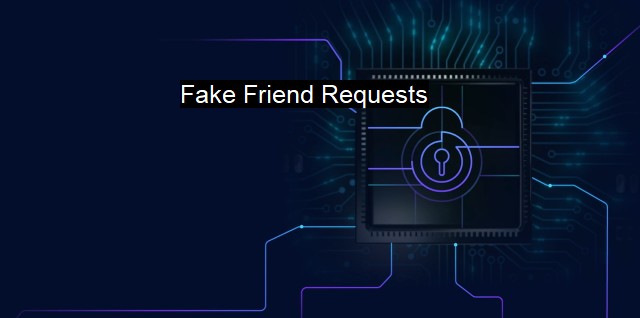What are Fake Friend Requests?
Protect Yourself From Fake Friend Requests on Social Media: Risks and Prevention
A "fake friend request" is a fraudulent request sent typically via social media platforms with sinister motives hiding behind the innocent guise of a simple friend request. It's a form of cybercrime, where cybercriminals impersonate real persons or create whole new fictional identities with the objective of deceit, manipulation, and exploitation.Fake friend requests are most commonly seen in social media platforms like Facebook, Instagram, Twitter, and LinkedIn. People are typically receptive and often amenable to adding new users to their network or accepting friend requests. the consequences of accepting these requests from fake profiles could be unsettling or even catastrophic from a security standpoint. A simple addition of a new 'friend' might be an opening of a Pandora's box of troubles.
Cybercriminals thrive on user-friendly platforms as it provides them with countless targets who may unsuspectingly fall into their traps. These 'friendships' are essentially a gateway to a host of potential risks including identity theft, hacking, online stalking, fraud, scamming, and data breach, amongst others.
Their modus operandi usually involves creating bogus accounts using stolen or fake photos and profiles, and then sending friend requests to targeted users. These accounts often appear genuine at face value, making it difficult for a user to distinguish between a real and a fake friend request.
Once such a fake friend request is accepted, the cyber criminal gets access to your personal information, posts, pictures, connections, and potentially sensitive data that you might have shared on that platform based on the privacy settings. Hardly ever do we think twice about the potential threat that lies hidden behind the wave of friendliness and the chronicles of a seemingly shared interest.
These fake account holders could use your personal information to impersonate you online, manipulate your friend circle, market irrelevant contents or worse, carry out phishing attacks. In other cases, these fake accounts engage in sending spammy links or malicious file attachments that could pose a threat to your cybersecurity wellbeing. Unknowingly you may click a link or download an attachment and thereon, unknowingly install malware or ransomware on your system.
Antivirus software and cybersecurity protocols have taken strides in fighting this growing menace with comprehensive protective measures. Hence, it's critical to leverage real-time antivirus protection that offers features like robust web protection, which can effectively block malicious links or downloads.
Further, it's important to gain a certain ground in cybersecurity and understand the telling signs of a potential fake account. Always verify new requests against their profile detail, carefully pick apart what's shared and posted on their wall, and weigh in the authenticity of mutual friends.
Regulating your privacy settings is also significant in limiting what an accepted friend can access. Ensuring your posts, pictures, and personal data are not open to all accepted connections can add an extra layer of security to your account. professionals recommend using two-factor authentication (2FA) which further strengthens the security barrier of one's accounts.
In the present digital world, the term 'friend' has taken a whole new meaning and along with its progression, it harbours several undercover risks. The accept button under a friend request thereby holds much power and pandora of problems if not used wisely. Therefore, while enjoying the convenience of social media and technology, let's put our privacy above all and remember, not every friend request is a prospective friendship.

Fake Friend Requests FAQs
What is a fake friend request in the context of cybersecurity?
A fake friend request is a fraudulent invitation that appears to come from a legitimate source, such as a social media platform. Its purpose is to gain access to your personal information, compromise your security, and potentially infect your device with malware.How do I recognize a fake friend request?
Fake friend requests often have suspicious characteristics. For example, they may come from a person you don't know and who has no mutual friends or interests. They may also have low-quality profile pictures, few posts or followers, and generic or grammatically incorrect messages. If you receive a friend request that seems too good to be true, it probably is.What should I do if I receive a fake friend request?
If you receive a fake friend request, do not accept it. Instead, report it to the social media platform and delete it. Additionally, make sure your profile is properly secured to minimize the risk of being targeted by cybercriminals.Can antivirus software protect me from fake friend requests?
Antivirus software cannot prevent fake friend requests directly, but it can help protect your device from malware that may be linked to such requests. Make sure you have a reliable and up-to-date antivirus program installed on your device and use it to scan all incoming messages and files for potential threats.| | A | | | B | | | C | | | D | | | E | | | F | | | G | | | H | | | I | | | J | | | K | | | L | | | M | |
| | N | | | O | | | P | | | Q | | | R | | | S | | | T | | | U | | | V | | | W | | | X | | | Y | | | Z | |
| | 1 | | | 2 | | | 3 | | | 4 | | | 7 | | | 8 | | |||||||